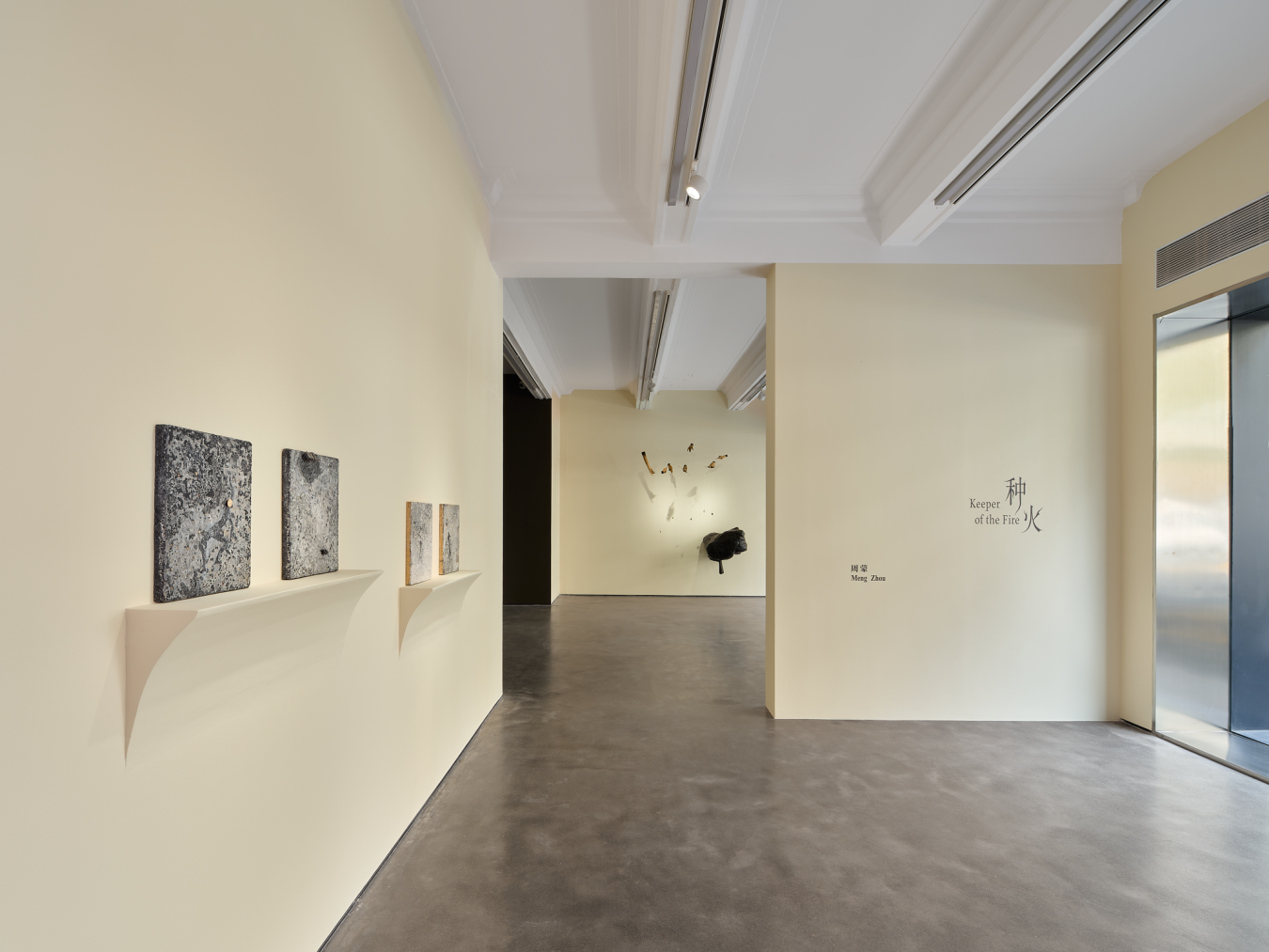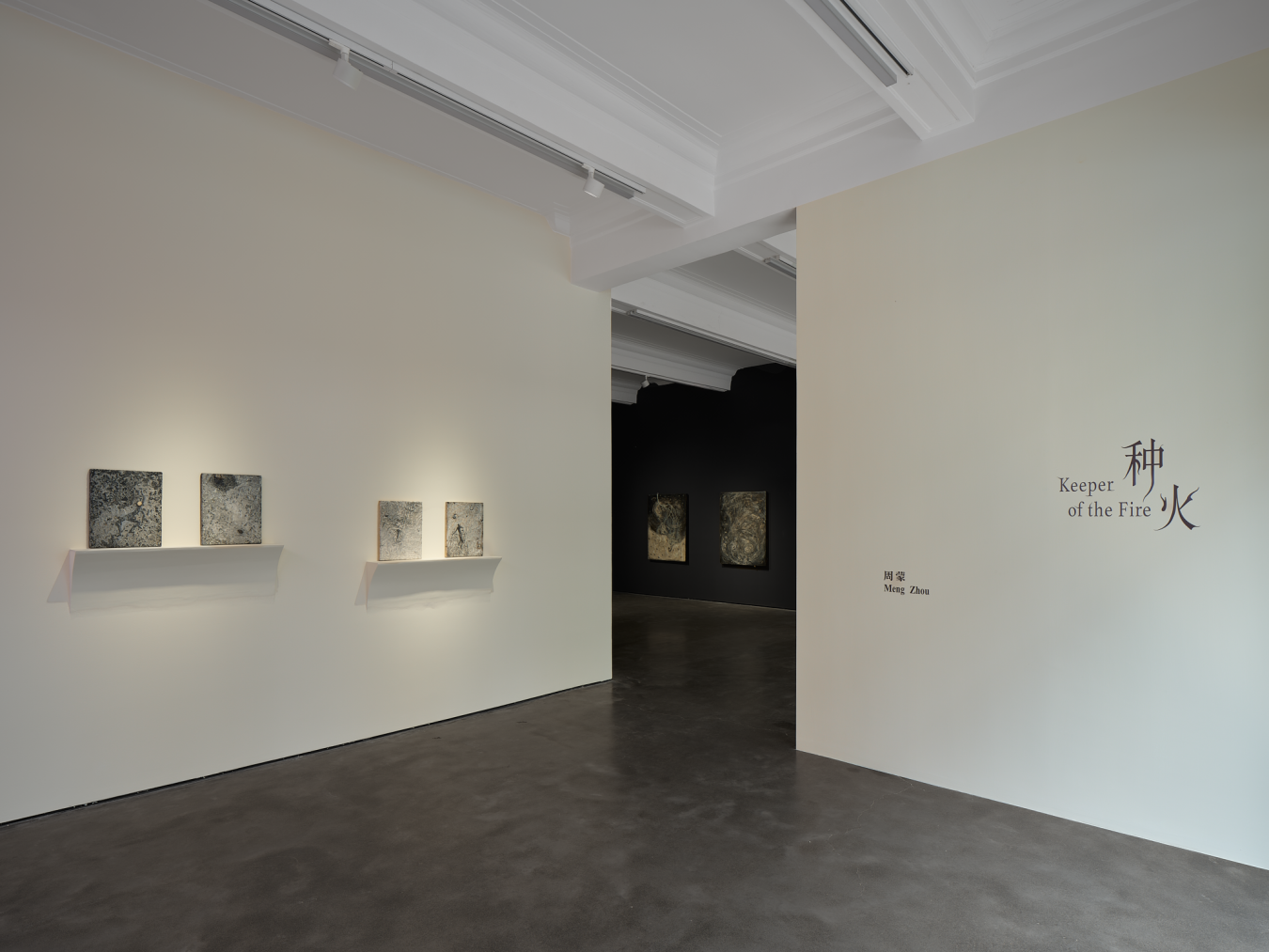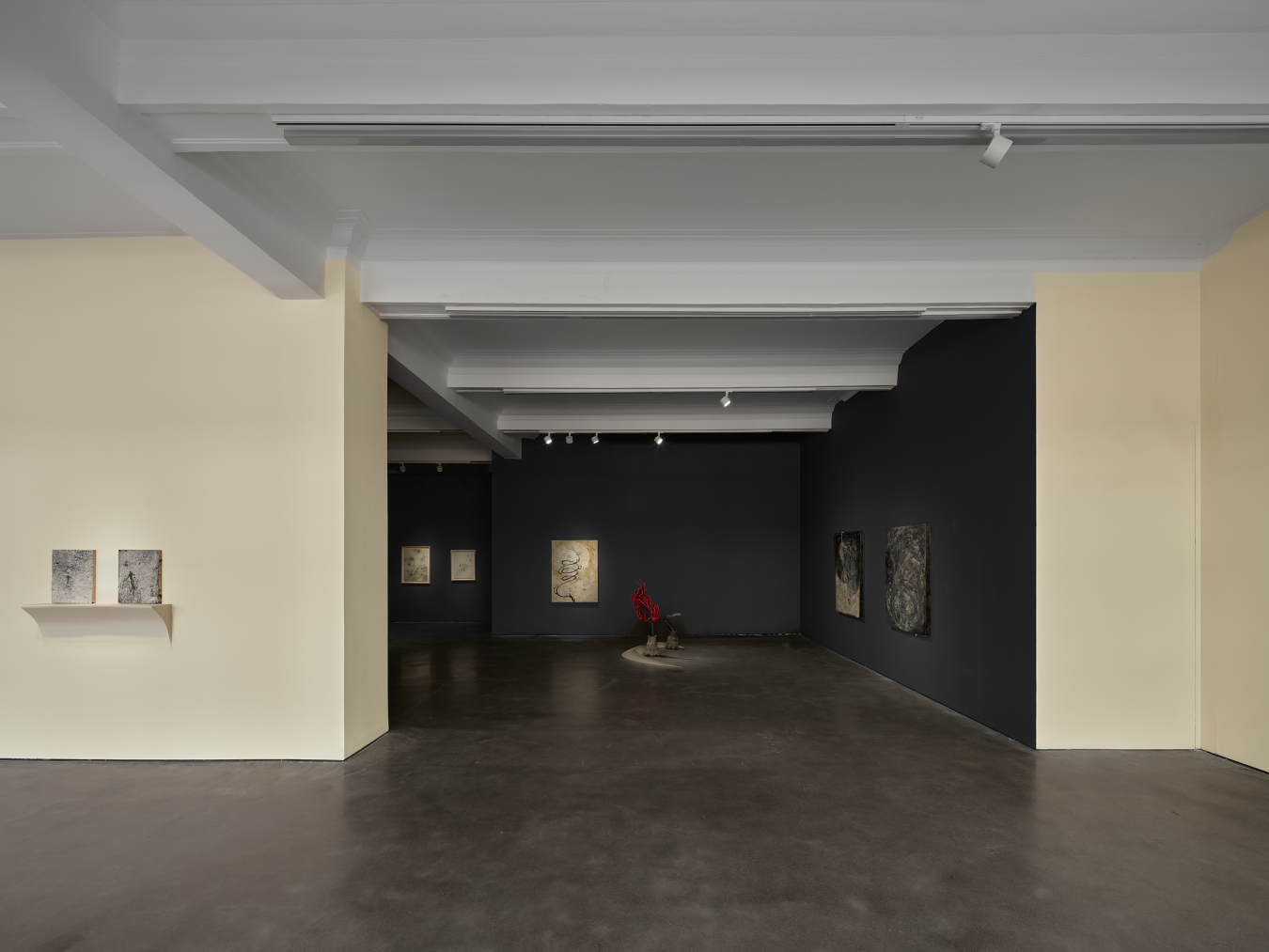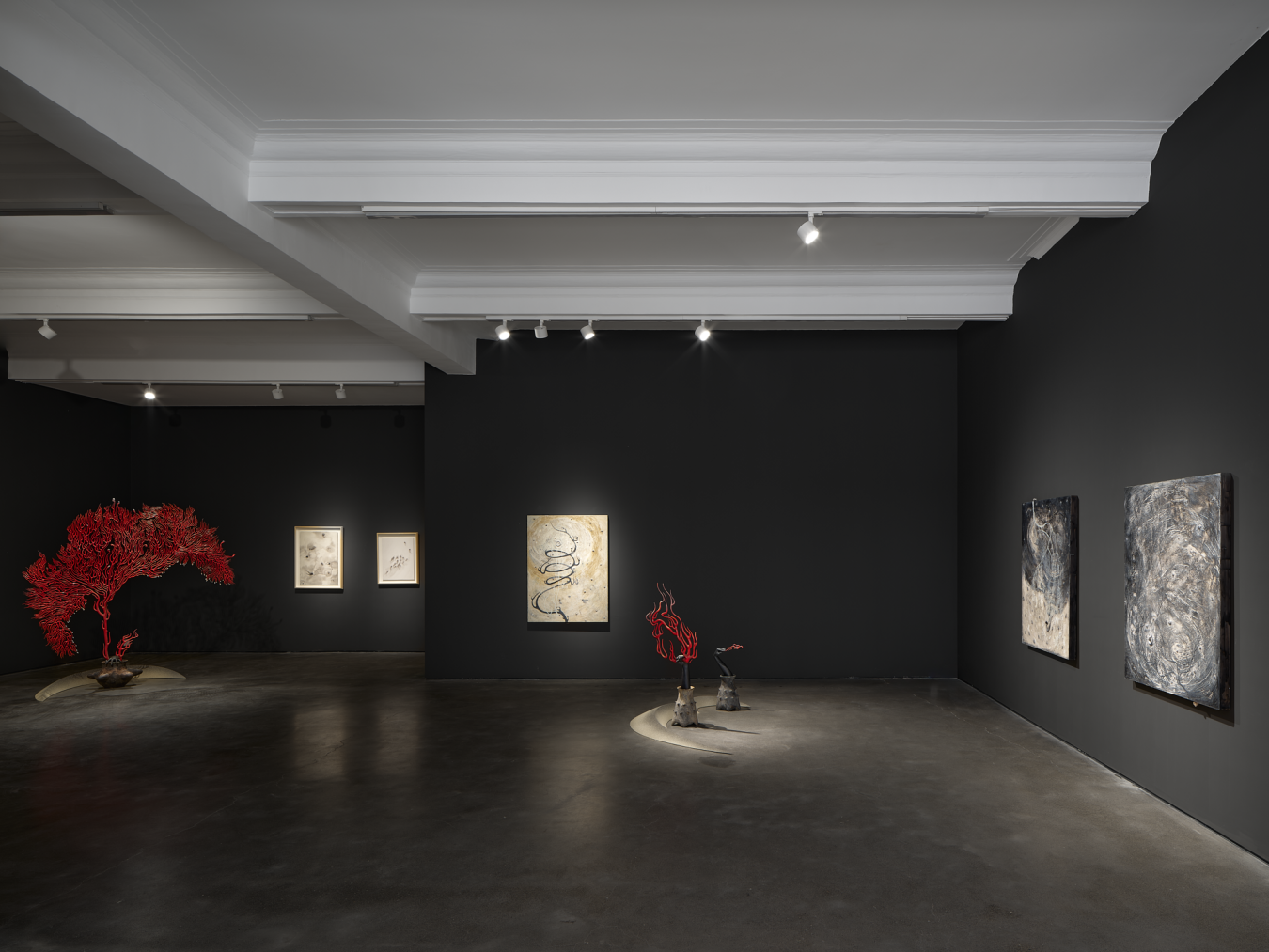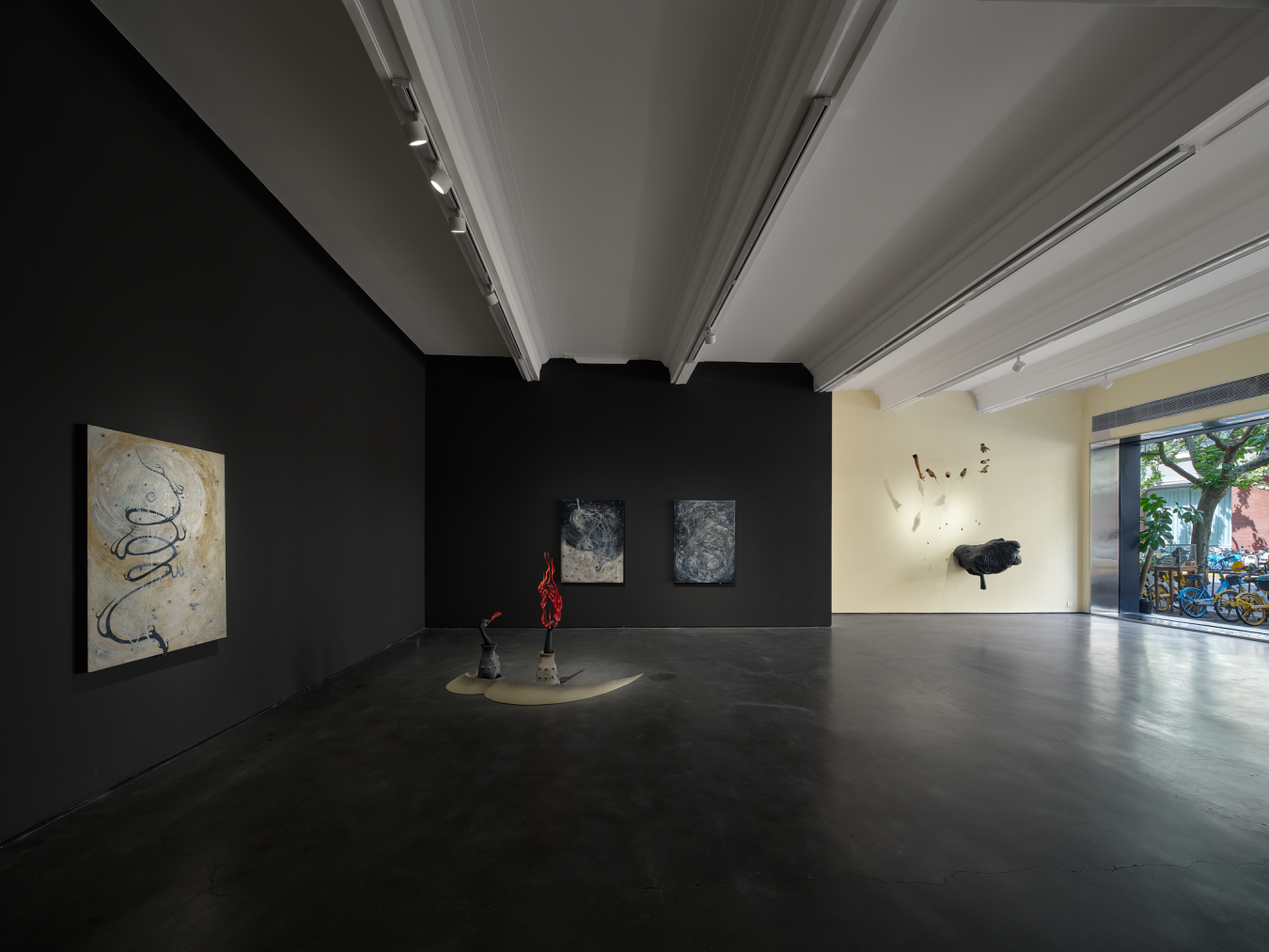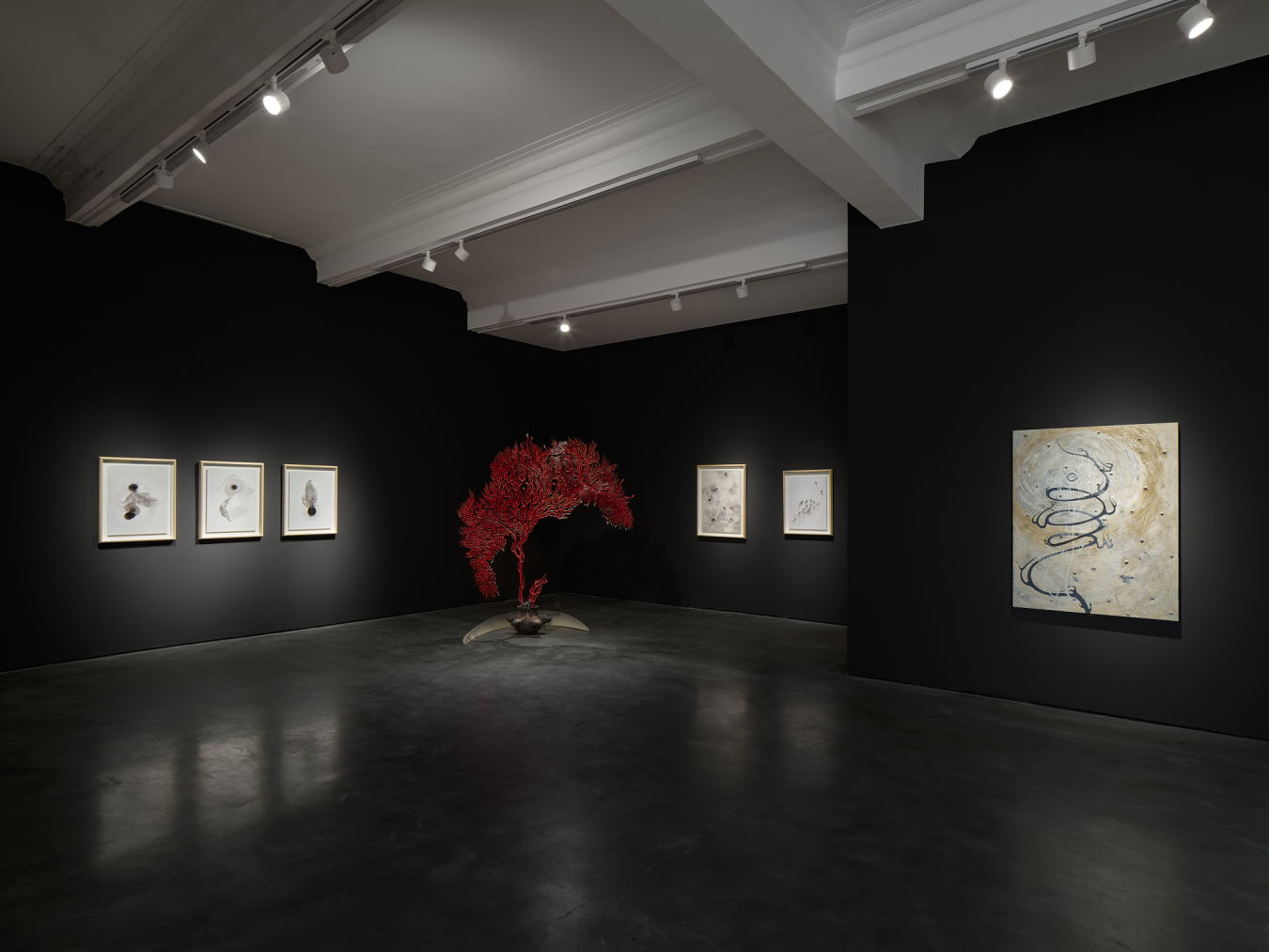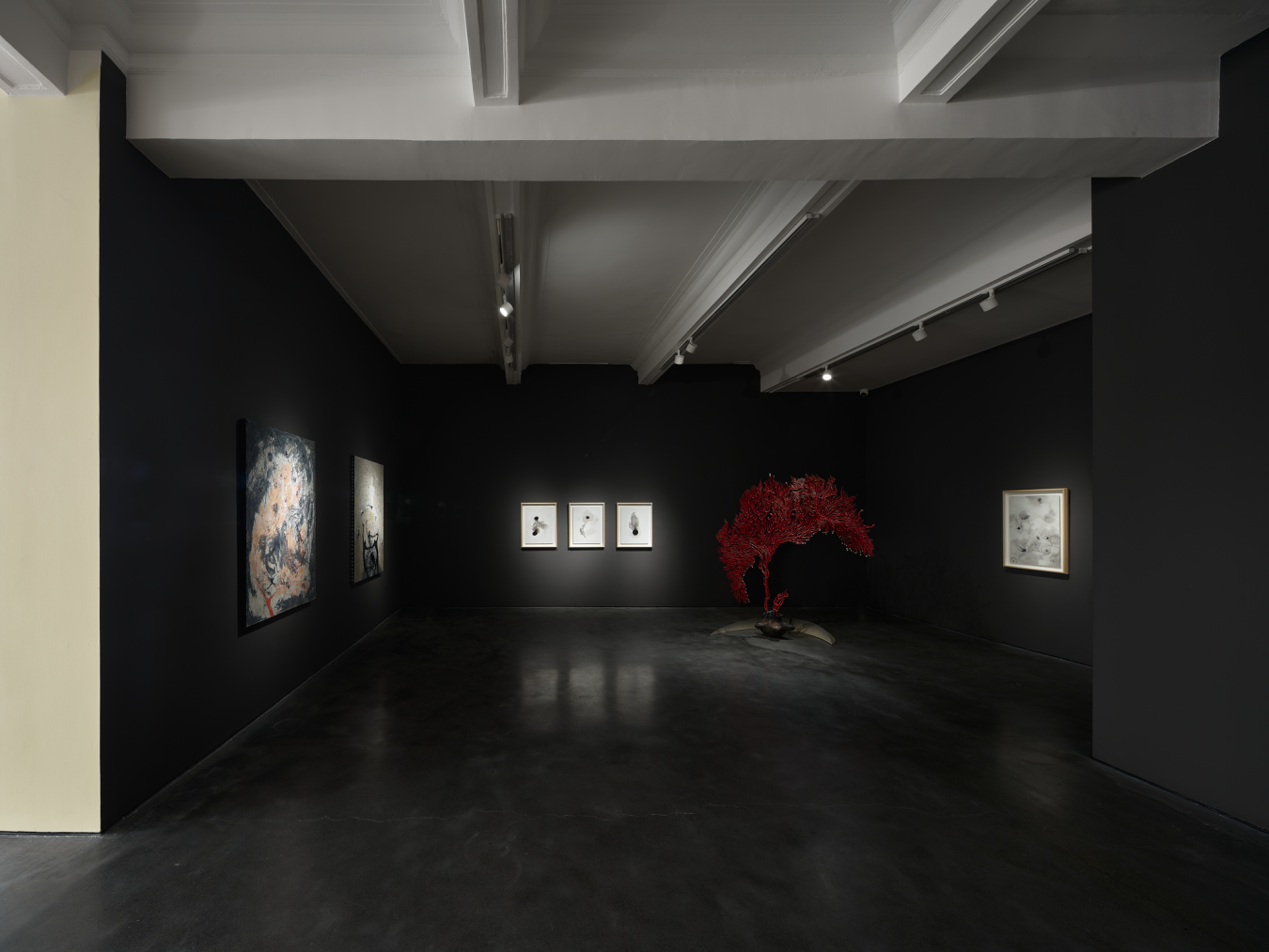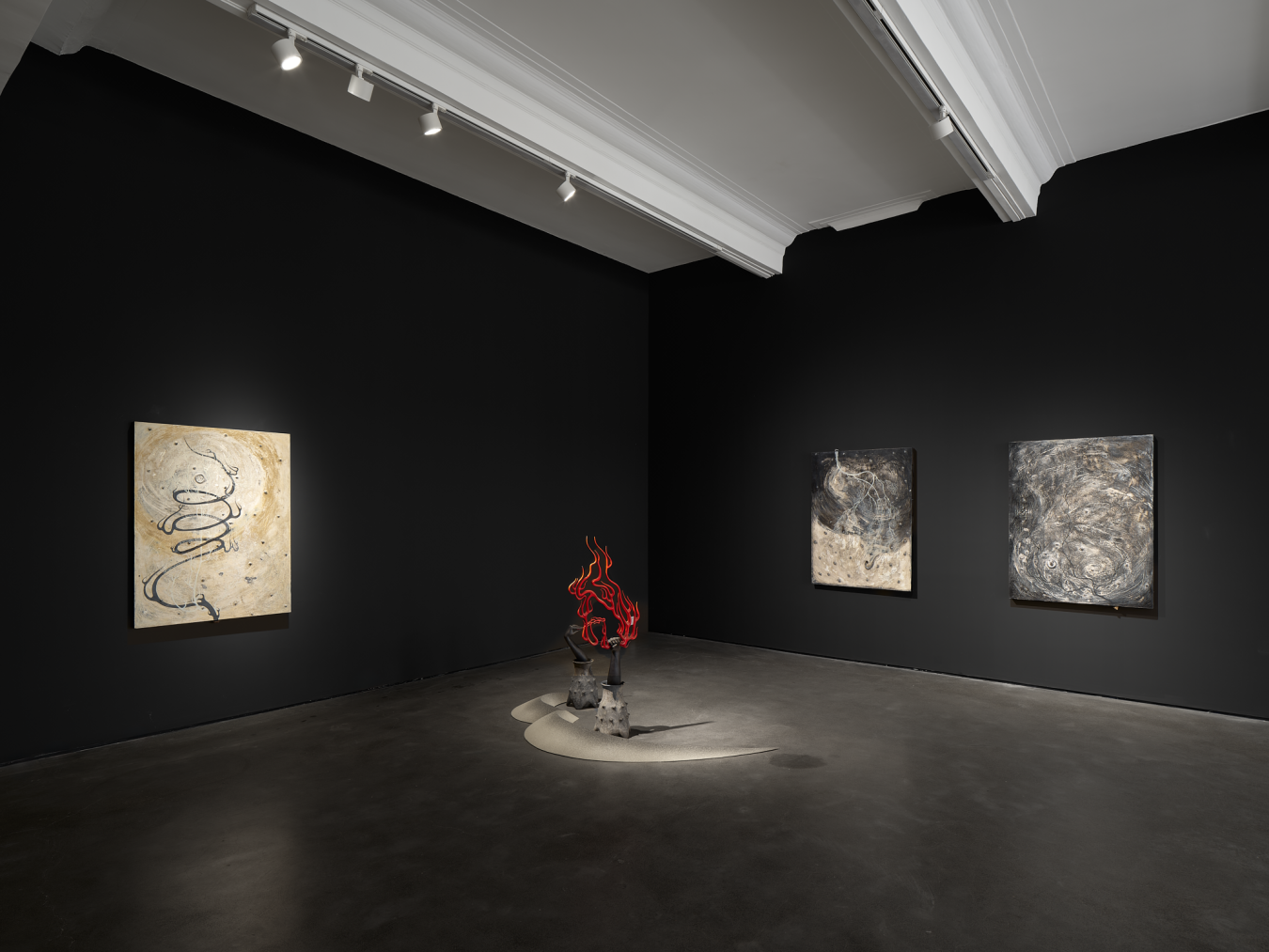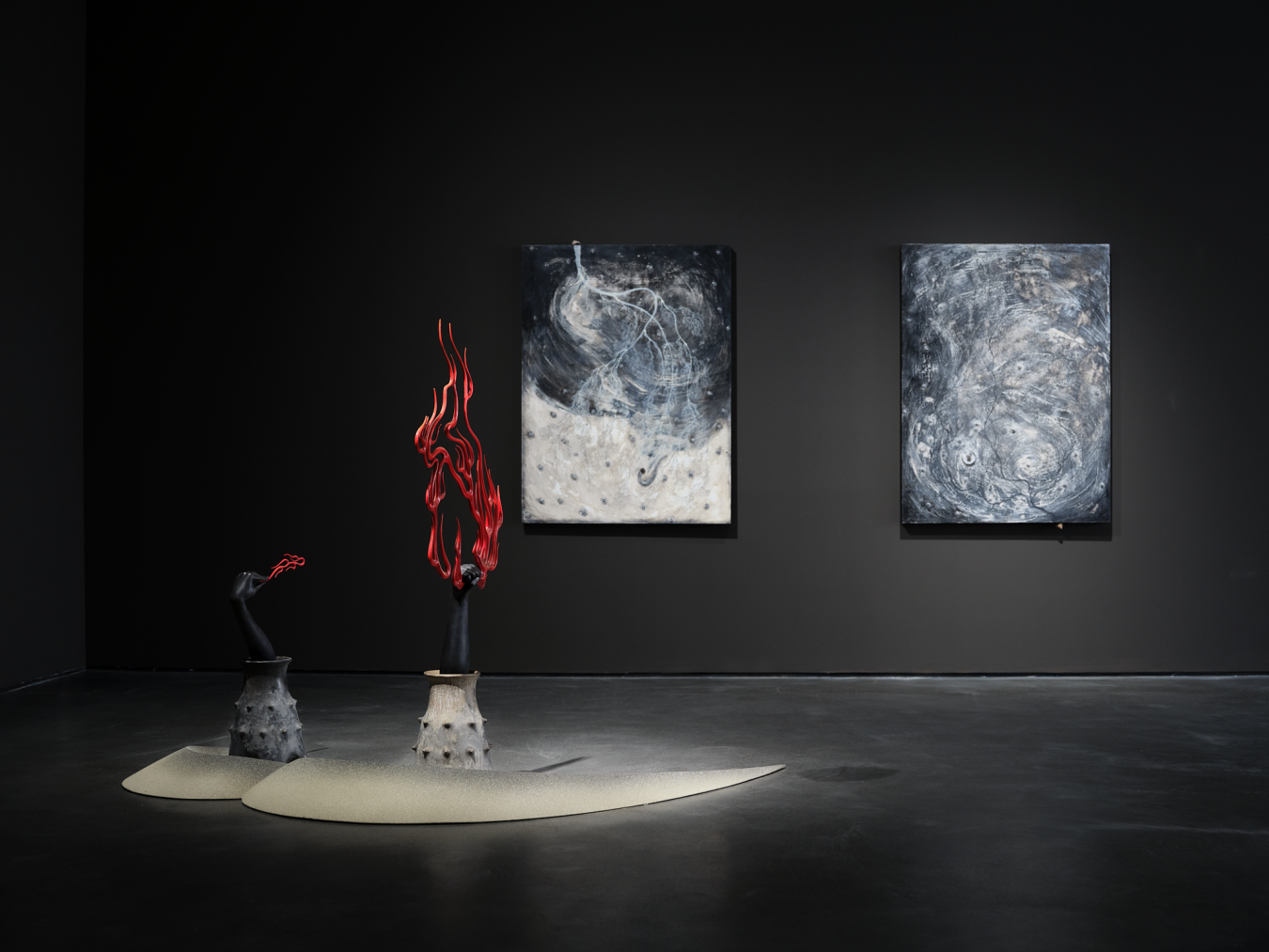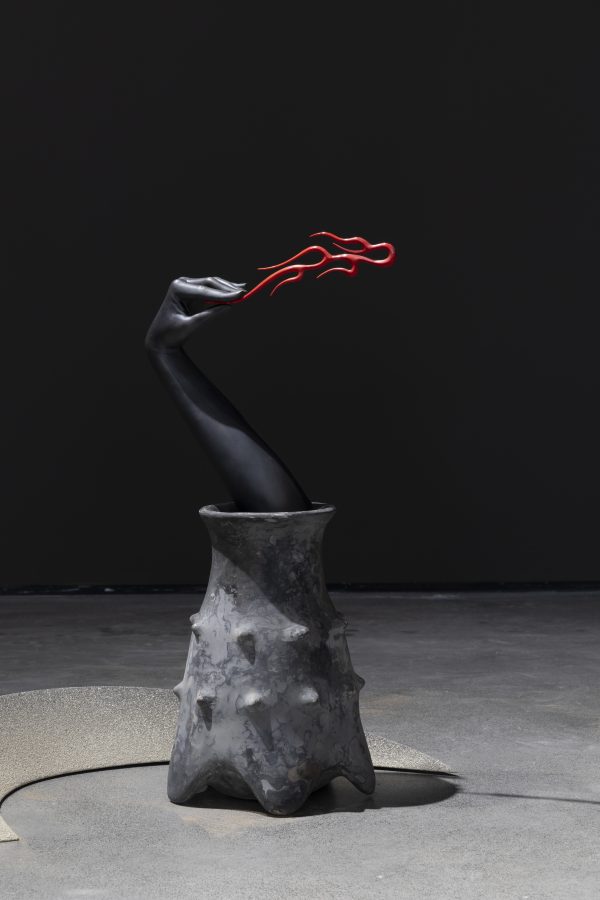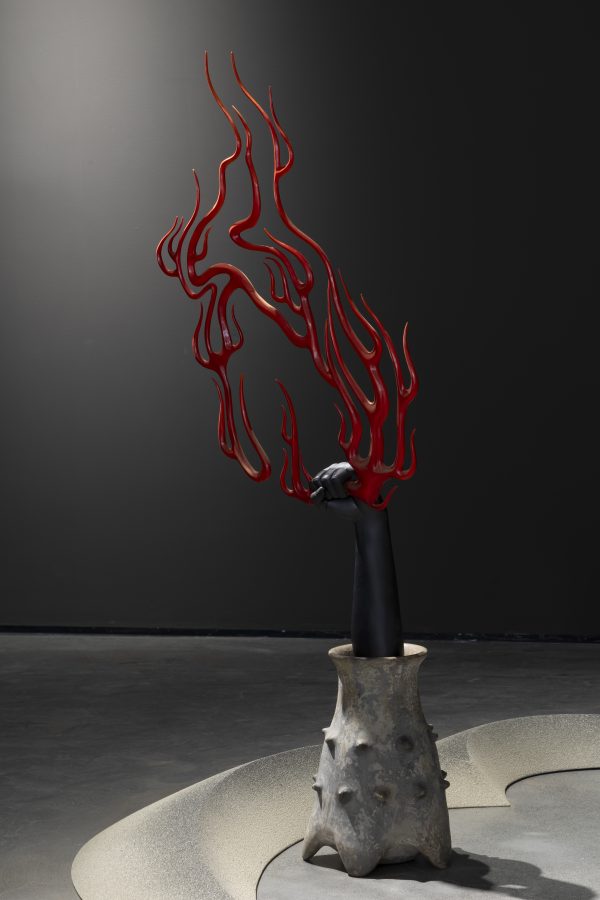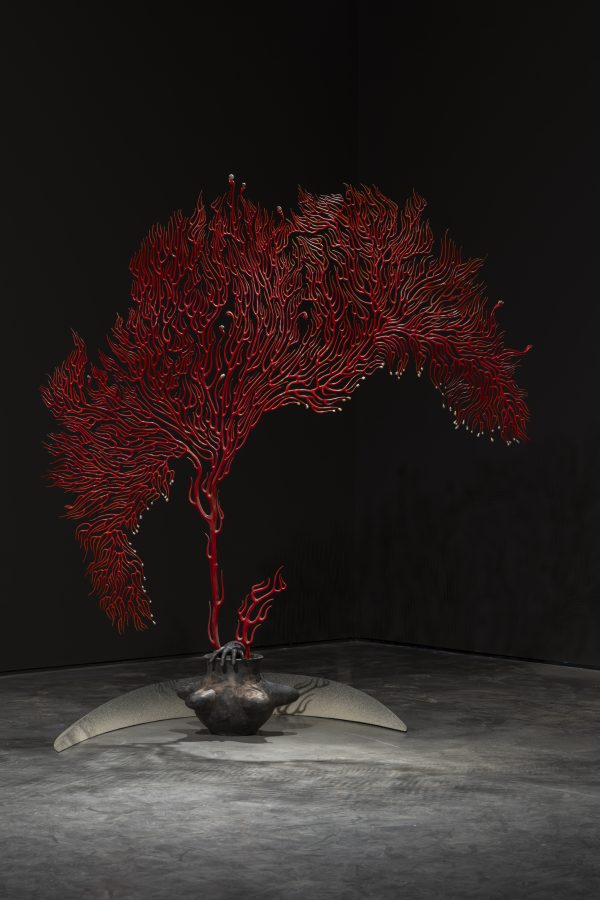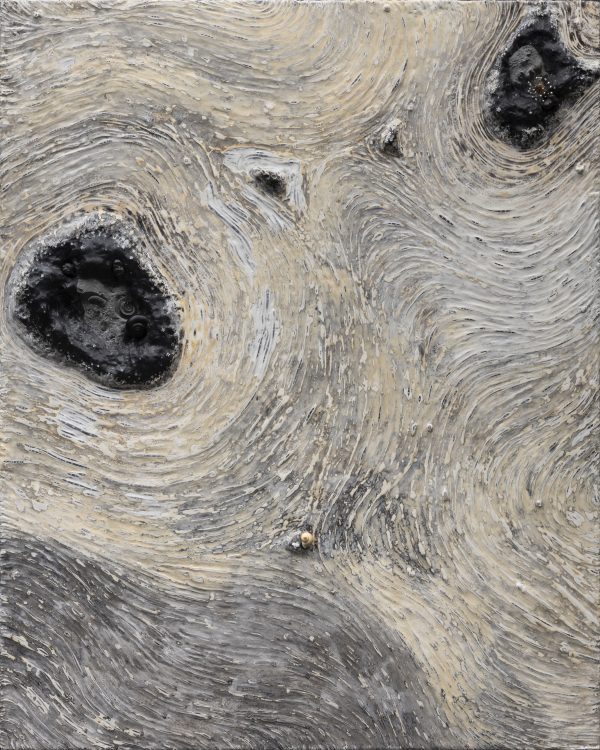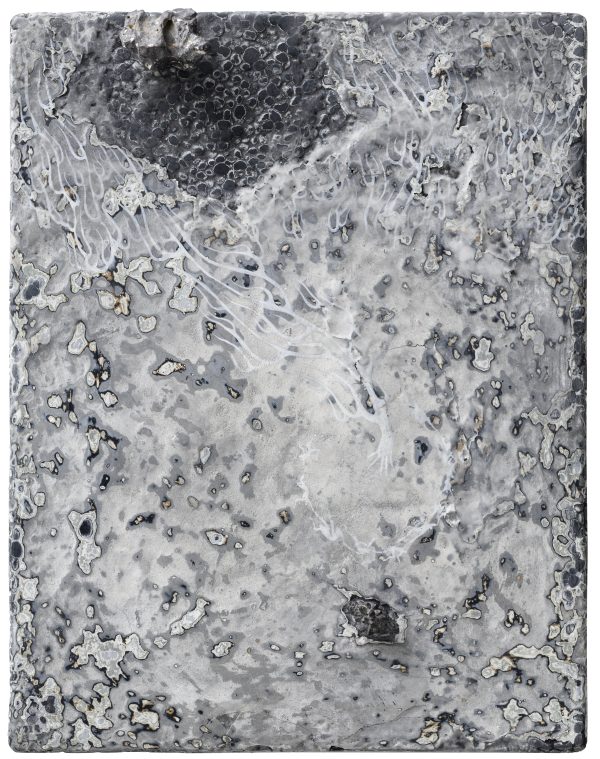
Meng Zhou
2025
Yellow cave stone, white marble, copper, soil, plaster
91.5×60×42cm;44×42×58cm

Meng Zhou
2025
Wood board, resin, ink, wax, loess, Dunhuang soil, volcanic soil, fossil, animal skin glue
150×120×8cm
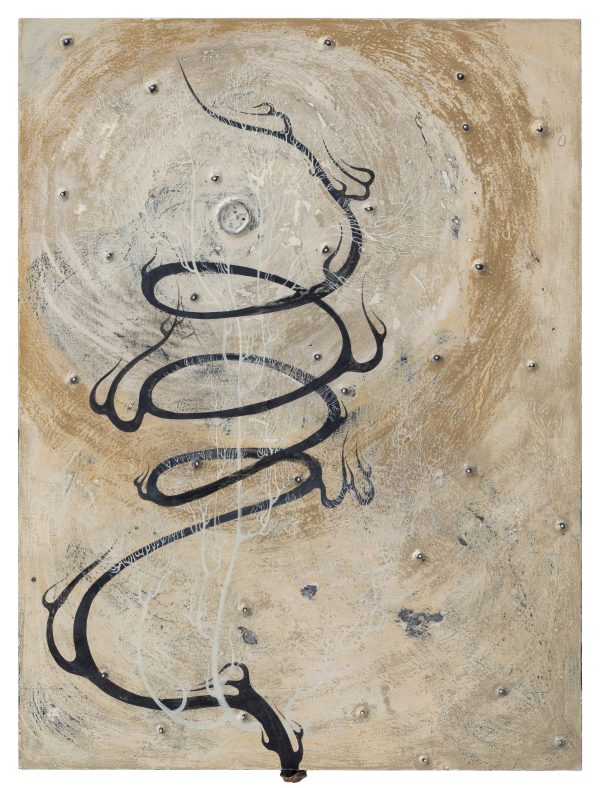
Meng Zhou
2025
Wood board, resin, mineral powder, wax, ink, mineral pigment, skin glue, seed, pearl, snail shell
122×92×5.5cm
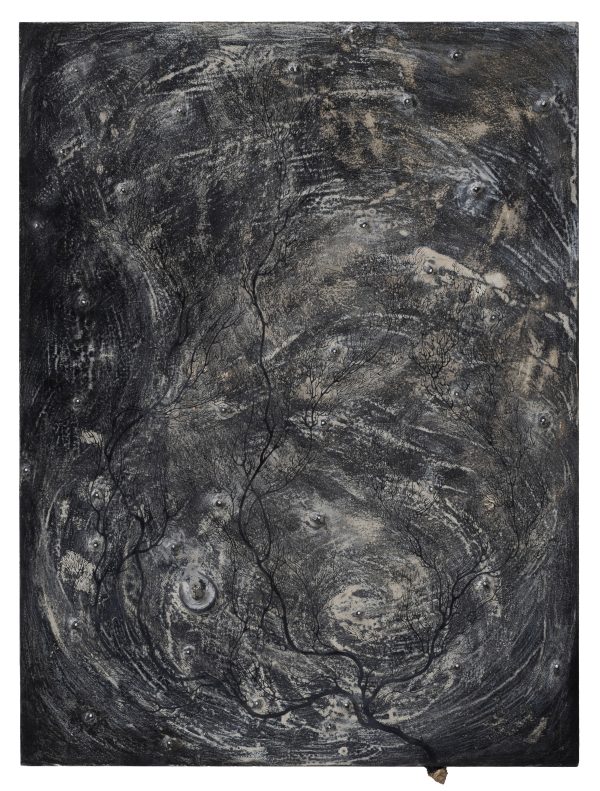
Meng Zhou
2025
Wood board, resin, mineral powder, wax, ink, mineral pigment, skin glue, iron meteorite, pearl, fossil
122×92×5.5cm
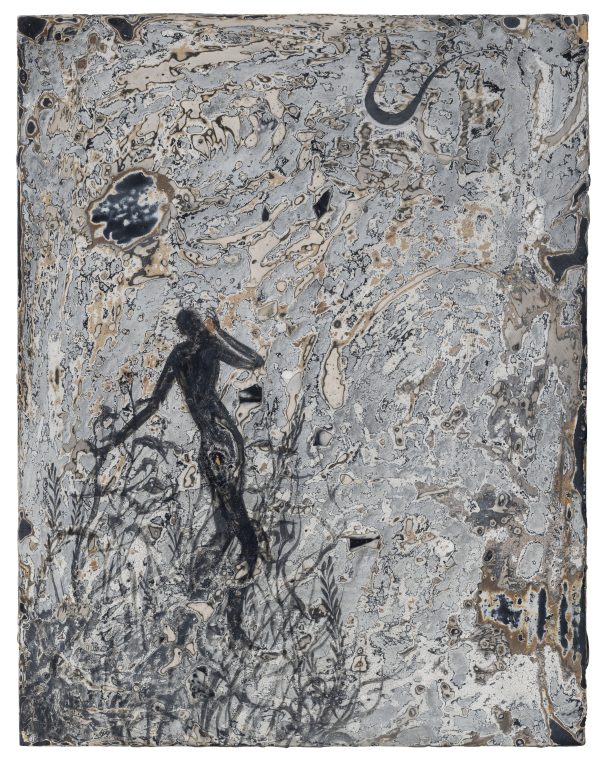
Meng Zhou
2025
Wood board, resin, mineral powder, wax, ink, mineral pigment, skin glue
41.5×32×3cm
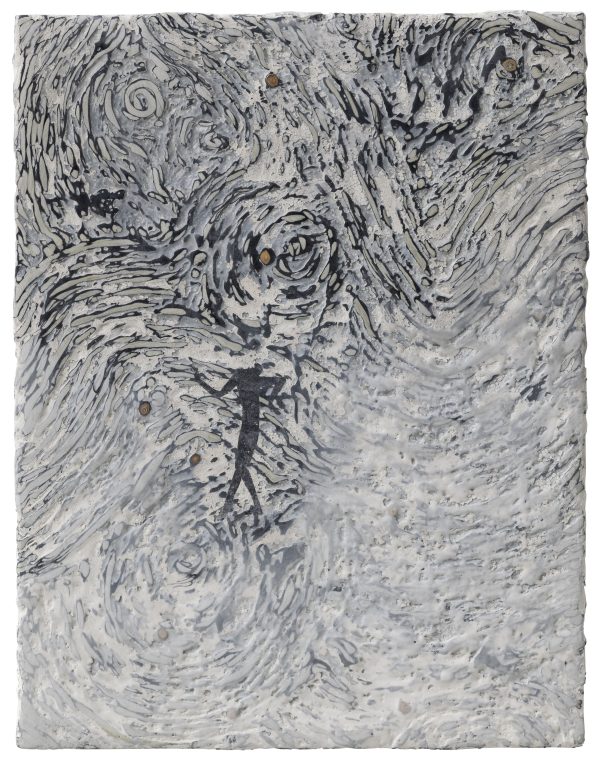
Meng Zhou
2025
Wood board, resin, mineral powder, wax, ink, mineral pigment, skin glue, coix seeds
41.5×32×3cm
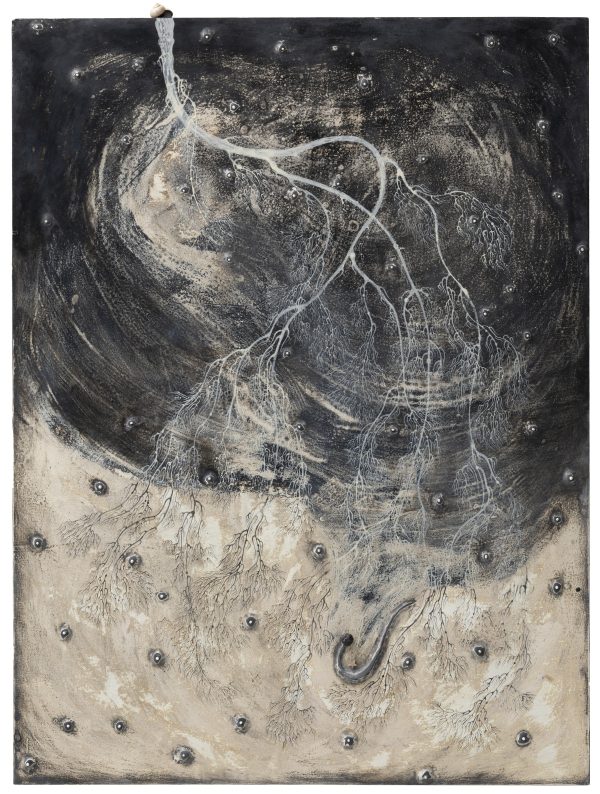
Meng Zhou
2025
Wood board, resin, mineral powder, wax, ink, mineral pigment, hide glue, pearl, pyrite, fossil, snail shell
122×92×5.5cm
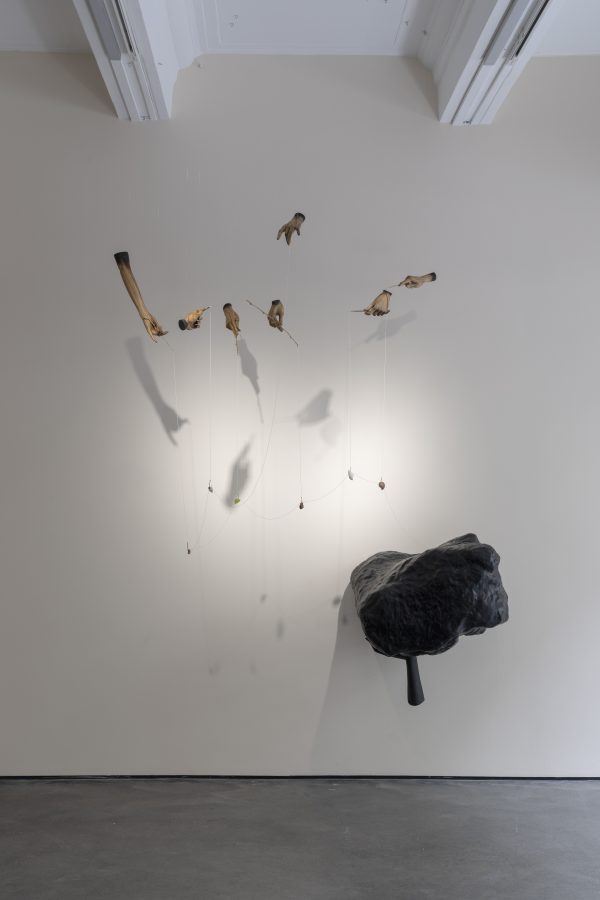
Meng Zhou
2025
Copper, snail shell, bamboo pole, twig, fish hook, camphorwood, resin
184×46×209cm
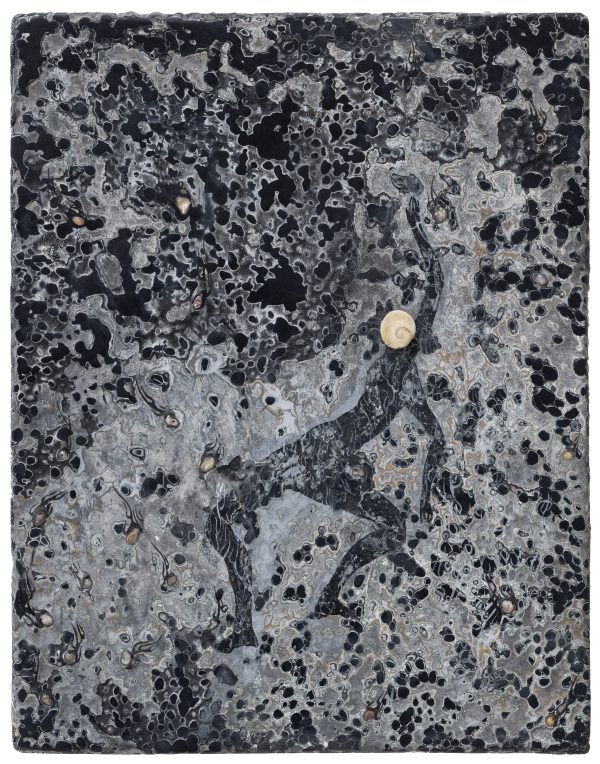
Meng Zhou
2025
Wood board, resin, mineral powder, shell, wax, ink, mineral pigment, skin glue, pearl
41.5×32×4cm
Hive Center for Contemporary Art is delighted to announce Meng Zhou’s latest solo exhibition, Keeper of the Fire, at Hive Becoming Shanghai on September 26, 2025, The London and Hangzhou-based artist presents new sculptural and pictorial works that explore the reconstruction and tracing of a world shaped by infinite fragmentation. Weaving together personal narratives, material encounters, and mythological allegories, Meng Zhou constructs a theatrical vision of cyclical life. Curated by Yu Fei, the exhibition will be on view through November 4.
Keeper of the Fire is a non-rational life ritual.
The stars of the cosmos collapse into sparks of fire, reviving within the colossal shell of a snail, then quietly nestled within the vessel of human civilization. In the span of an instant, the fire is grasped and emerges in hands, its essence transforming into a tree, vibrant and monumental. The tree regenerates its branches into the shape of hands yet again, interlocking like ouroboros, where new life merges with decay, and creation verges on annihilation.
This is the miraculous world Meng Zhou subtly constructs through a series of sculptures, a model where familiar stories vaguely resurface. In Greek mythology, fire is stolen by Prometheus and gifted to humankind, a transgression for which he is eternally punished, with an eagle devouring his liver. Yet in Meng Zhou’s reimagining, both Prometheus and the eagle vanish, replaced by a snail shell, repeatedly pecked by a bird until punctured, echoing the ancient myth in the natural world. This shell thus becomes the container for the unknown stories and life cycles yet to be born.
Myth and material, as sedimentary deposits of time, constitute the dual poles of Meng Zhou’s artistic universe. He perpetually seeks and excavates from these sources, observing their reciprocal stimulation and the chemical reactions that arise. As his consciousness meanders through the mythologies of Greece, the Norse, China, and many others, the artist’s body too never ceases to journey, encountering materials from diverse corners of the world. Whether it is a snail shell from Yemen, an Ankareena seed from South Africa, or minerals from the Sahara, Meng Zhou meticulously collects and accumulates. His obsession with these objects is not one of simple possession, but rather a means of casting them into new cycles of existence through his creative process. More crucially, through his tactile engagement with these materials, Meng Zhou contemplates and imagines the passage of time they have endured—on the surface of the earth, below its crust, and even beyond it. Varied wind speeds and humidity levels nurture and shape them, each possessing unique forms, yet all sharing elemental traits that hark back to ancient origins. Consequently, Meng Zhou’s painting process functions as a simulation of natural laws, with multiple materials accumulating like geological strata, layer upon layer. When gently abraded, they reveal fragmented maps upon which sparse brushstrokes depict fire, water, and human figures—traces etched in history, yet laden with the cryptic essence of future allegories.
Simultaneously, the human figures move and dance across blank pages, coalescing and dispersing within the symbiosis of ink and water, subtly mirroring the rhythm of life’s inception. Dance forms the very axis of Meng Zhou’s work, as the motion of these shadows expands outward, overflowing the borders of the frame, perpetually seeking resonance with all beings and the universe. From ancient spiritual rites to contemporary humanistic theater, in which the body now inscribes emotions and states of being, the expansive history of dance is embraced within Meng Zhou’s human silhouettes. In the flicker of firelight and the undulation of water, it commemorates the ephemeral nature of human existence, while underscoring the perpetual coexistence between humanity and all life.
